
На сайте используются cookie файлы
The site uses cookie files
Данный сайт имеет возрастное ограничение!
This site has age restrictions!
Я подтверждаю, что мне, увы, уже давно исполнилось 18 лет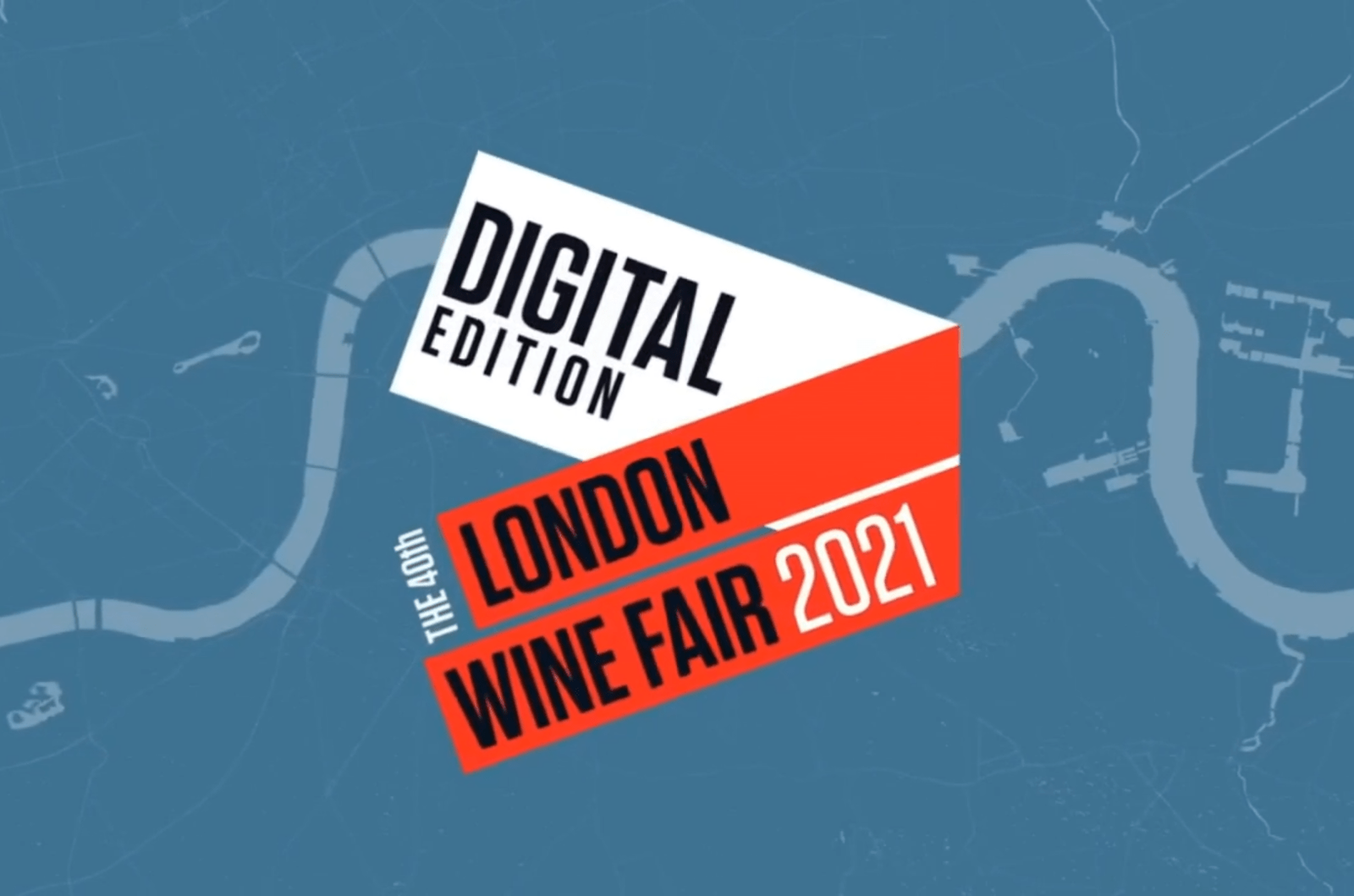
Our media group took part in the largest online beverage trade show London Wine Fair along with Decanter, The Drinks Business, and other authoritative publishing houses.
2,608 visitors attended the London Wine Fair, with 238 virtual stands, showing over 3,435 different products, from 33 different countries. Borough Wines, which partnered with the London Wine Fair to manage sample rebottling and deliveries, has reported that just over 25,000 individual samples have been sent out prior to and during The Fair, with further samples expected over the coming days and weeks.
The 28 sessions, which included Tasting Masterclasses, Industry Briefings and Panel Discussions, have been viewed nearly 6,000 times so far, with 154 people watching The Fair’s headline briefing live on the first morning: the WSTA’s “Wine Trading 2021: Where are we?” hosted by CEO Miles Beale. Almost 9,500 meeting communications took place throughout the three days, within the networking platform; these were a combination of those suggested by the algorithm as well as meetings proactively prompted by attendees.
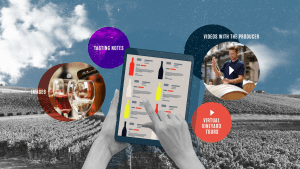
The first 100% digital LWF lasted three days (17-19 May) and raised the issues of Covid and Brexit challenges, diversity, and sustainability in the wine industry. The exhibition had a large geographical scope discovering and tasting alternative varieties from New Zealand, South Africa, Cyprus, India, Portugal, Spain, and organic/biodynamic wines from France. Our representatives joined one of the biggest networks of wine experts, winemakers, distributors, and organizations operating in the wine and spirits industry all over the world.
The London Wine Fair platform will remain in place for a further three months, allowing registered visitors access to samples via exhibitor stands as well as recordings of the schedule of content.

Wine trading: where we are now
The main concern of the UK wine trading challenged by Brexit and Covid became the leitmotif of LWF. The UK has been the center of the world wine trade for 900 years and it is the second biggest exporter of wine regarding volume and value (volume after Germany, value after the USA). Passionately trying to reunite wine industry working with the government, the UK aims to keep this trajectory and its leading position further on. According to the phased reopening plan announced by Boris Johnson, the country expects having parts of the hospitality industry, including shops, bars, and restaurants opened in July.
At the same time, WSTA claims things will not return to the way they were used to be, the wine industry will not stay the same. One of the trends Covid pandemic brought is the increase in the online sales. European Association of Wine Economists provided the statistics of 2020 on this issue indicating that online sales have increased on 180% for some EU members and 30% across the EU. At the same time, online sale represents only 1,5% of wine companies turnover. In the UK, the last figures of online sales increase are more likely to be around 10%. However, 2021 online sales are volumed back comparing to the pick of 2020.
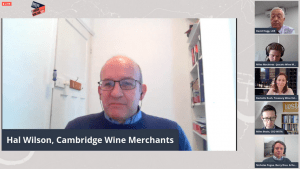
Hal Wilson notes that Cambridge Wine Merchants managed to get almost the same turnover and not to lose much trade due to having embraced the current trends of online retail channels and building strong business identity as a part of a community. “It was important to cooperate with companies, educators, winemakers and engage with customers to let them know the reality. This helped to get the solidarity within our trade. We tried to facilitate the education side by helping educators get bottles of wine, some samples of wine on time and in an interactive and cost-efficient way”, indicate Hal.
The biggest change trading over years is Brexit. Transition period finished in December 2020. Changes are inevitable and systematic: enforcement police, the custom union leave, changing rules. The WSTA works closely with the government to evolve new business models and help wine industry to sustain.
The UK government announced it would leave the custom union with or without a deal. So, Brexit provided the UK wine producers with difficulties in transporting and explosion of paperwork. But there is no further recommendations or predictions what can be done to avoid additional red tape. Finding the solutions for the post-Brexit situation lies completely at the door of the UK government.
In fact, 33 million wine consumers of the UK will feel difference. Trading with the EU will get harder while with the other part of the world might be easier. The Comprehensive and Progressive Agreement for Trans-Pacific Partnership (CTPTP) withdrew by Trump is one of the world’s largest free-trade areas by GDP.
Environmental agenda and wine’s carbon footprint
Regarding environmental and social sustainability agenda, the UK has been a leader for a long time. Environmental sustainability requires reducing agricultural impact, reducing water pollution. Industry is responsible for providing meaningful approach and satisfy customer choice, for example, by taking care of wine packaging to avoid microplastic.
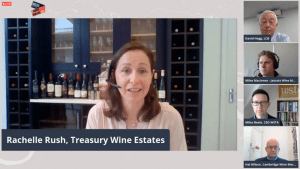
“Covid and Brexit are not the only challenges we had. We cannot forget the natural disasters that have brought climate crisis such as the Australian bushfires, the US wildfires, and the recent severe frost in France which are placing an additional pressure on wineries and the international wine market as a whole”, emphasizes Rachelle Rush from Treasury Wine Estates.
Looking for solutions how to reduce wine’s carbon footprint, International Wineries for Climate Action shared its practices. The immediate actions that the wine companies can do to reduce their carbon footprint are straightforward: to install on-side renewable energy, to transition to electric vehicles and tractors, to reduce bottle weight up to 40-50% depending on the model, to mix and optimize transportation, to shift work and business travel to remote. The major shifts are going to come on indirect influence such as positive pressure, supplier lobbying, customer collaboration, government, and media advocacy.
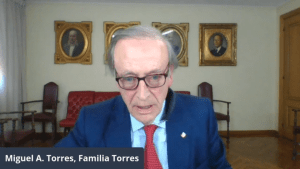
Miguel A. Torres, co-founder of the IWCA, notes that today for any wineries, there are two possibilities to address climate change, firstly, viticulture where you try to store maximum carbon into the soil using specialized cover crops, and secondly, planting more trees around the vineyards.

Julien Gervreau adds that taking care of transportation and packaging is a key here as well: “Shifting from using gas to renewable electricity to produce wine bottles is ideal. Two third of total carbon footprint comes from packaging in Jakson Family Wines.” As a possible solution, there is a necessity of European politicians to agree on a single standard wine bottle over Europe which might be accepted later in the U.S.
London Wine Fair 2022
Commenting, Head of London Wine Fair, Hannah Tovey said: “Many of the decisions we have taken when building the digital show have been made with 2022 in mind. We strongly believe that a hybrid London Wine Fair will be absolutely invaluable to enhancing our exhibitor experience, whilst opening the show up to a larger potential audience and providing a platform beyond three days in May. Whilst digital will never entirely replace in person tastings and face to face meetings – so vital in our industry – the online aspect brings another dimension to the event and is something we will look to incorporate moving forward.”
The dates for the 2022 London Wine Fair, which will take place at Olympia and online, will be 16th to 18th May, with a further three months hosted on the digital platform.